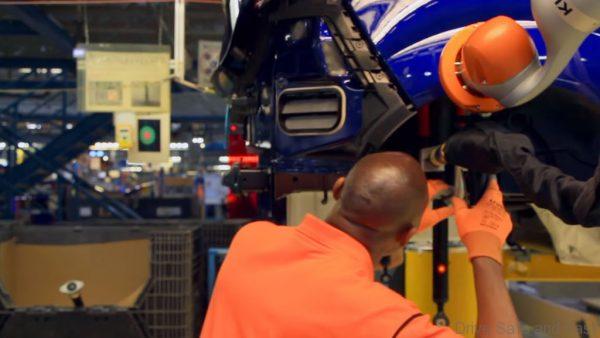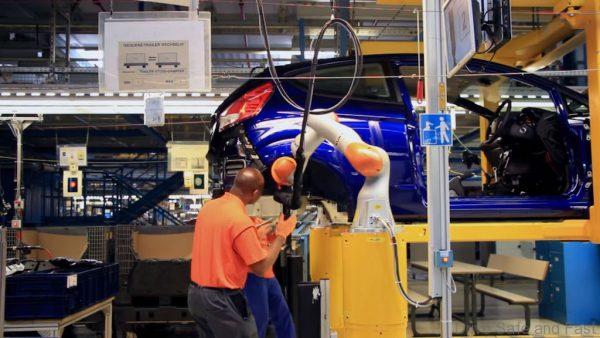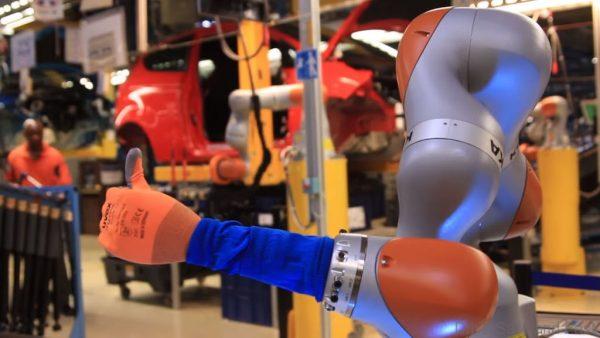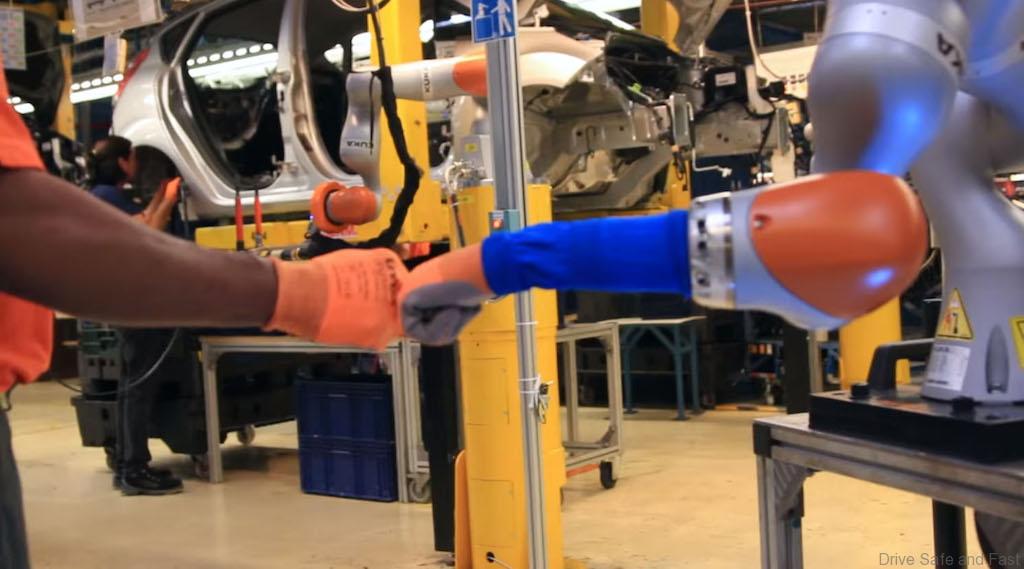More than 100 years after the first cars rolled off Henry Ford’s pioneering assembly line, Ford Motor Company is breaking new ground in the way workers and robots are collaborating to manufacture vehicles.

New collaborative robots, also known as co-bots, are first being used to help workers fit shock absorbers to Fiesta cars, a task that requires pinpoint accuracy, strength, and a high level of dexterity. Employees work hand-in-hand with the robots to ensure a perfect fit every time.
The trial at Ford’s assembly plant in Cologne, Germany, is part of the company’s investigations into Industry 4.0, a term coined to describe a fourth industrial revolution, embracing automation, data exchange and manufacturing technologies. Ford sought feedback from more than 1,000 production line workers to identify tasks for which the new robots would best be suited.

Measuring a little more than 3 feet high, the new robots work hand-in-hand with the line workers at two work stations. Rather than manipulate a heavy shock absorber and installation tool, workers can now use the robot to lift and automatically position the shock absorber into the wheel arch, before pushing a button to complete installation.

Equipped with high-tech sensors, the co-bots stop immediately if they detect an arm or even a finger in their path, ensuring worker safety. Similar technology also is used in the pharmaceutical and electronics industries. Developed over two years, the robot program was carried out in close partnership with German robot manufacturer, KUKA Roboter GmbH.

Ford is now reviewing further use of collaborative robots that can be programmed to perform tasks ranging from shaking “hands” to making a coffee.




